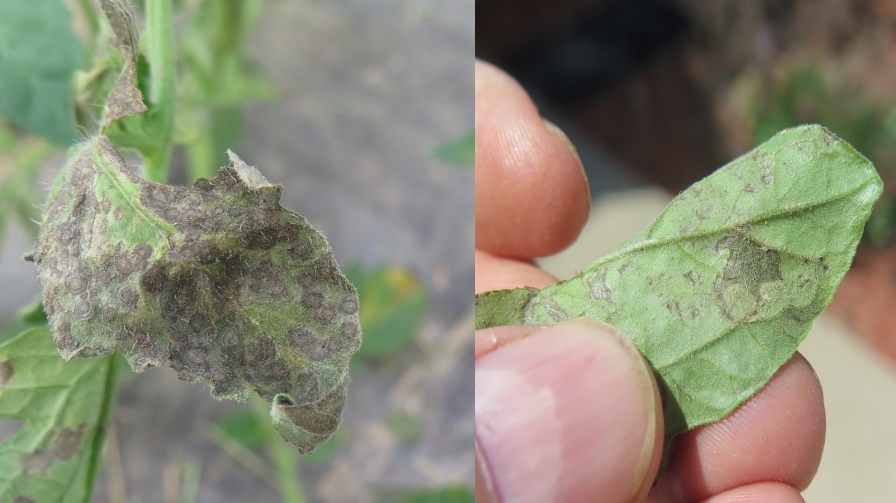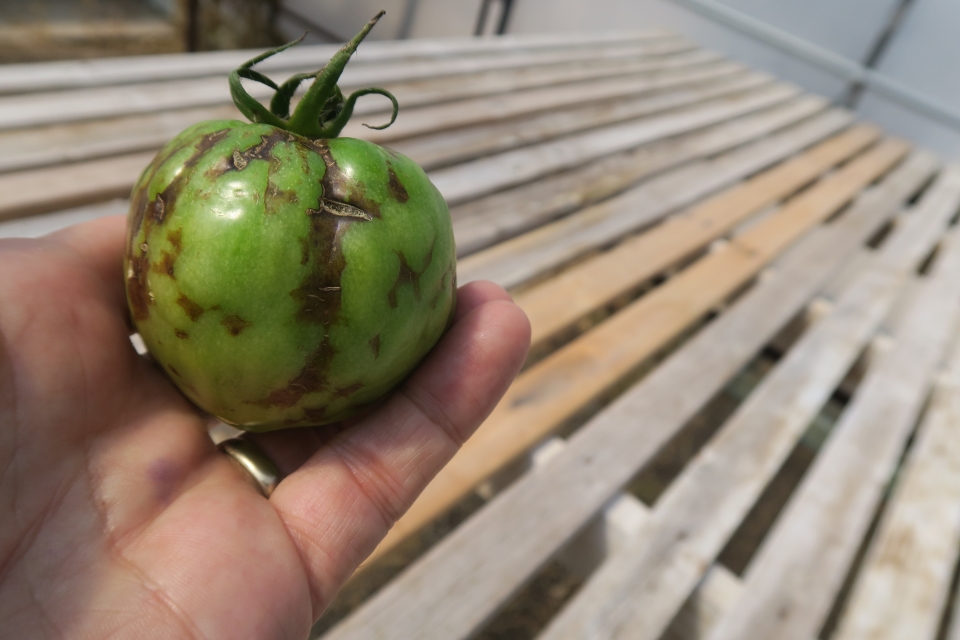Everything You Should Know About Tomato Spotted Wilt Virus
Tomato spotted wilt virus infects many plant species. Some common crops include peanuts, tomato, pepper, potato, tobacco, and lettuce.
In tomato, small, light brown flecks first appear on leaves. These spots later turn brown, followed by a general browning of leaves that die and appear drooped on stems giving the impression they are wilted. Stunting and yellowing of leaves, except the veins, also can be associated with the disease and could be confused with nutritional issues. Green fruit show concentric rings of yellow or brown alternating with the background green color, and striking brown rings occur on red-ripe fruit.
Symptoms often occur randomly. Although sometimes, several plants in a row will get infected.
Survival and Spread
In 1919, tomato spotted wilt virus (TSWV) was first described in tomato in Australia. Since that time, the disease has spread to many areas of the world. The primary movement of TSWV from one plant to another is by the feeding of thrips. Six species of thrips can transmit TSWV: Western flower thrips, onion thrips, and tobacco thrips are among the vectors for TSWV that occur in Florida.
In North Florida, populations of thrips found in flowers have been highest from late April to early June. It is during and shortly after this time that symptoms of TSWV begin to appear in tomato, peanut, pepper, and tobacco there.
When larvae feed on infected tissue for 15 minutes or more, they may acquire the virus. Mature larvae fall to the soil and become pupae that do not feed on the plant. Later, winged adults emerge from the pupae. Thrips can only transmit the virus if it is acquired during their larval stages; although both larval and adult thrips are able to transmit the virus. Adult thrips may carry the virus for its entire life, but the virus is not passed on to the egg stage. The next generation acquires the virus by feeding on infected plants.
Another major source of virus can be weeds. But at this time, we do not know what weeds function as hosts and sources for TSWV in Florida.

Tomato spotted wilt virus causes a ring pattern that can be confused with early blight, gray mold, or other fungal diseases. But the lesions caused by TSWV aren’t prominent on the underside of tomato leaves, while fungal pathogen lesions are easily observed on both sides of the leaves. Photo by Daniel Egel
Management Methods
A combination of methods is most effective in managing this disease. Chemical control should be integrated with cultural and other methods to reduce selection pressure for resistance development.
Cultural methods such as the use of reflective metalized mulches can repel thrips in tomato and pepper. Weed control in and around tomato or pepper fields is important, and tomatoes and peppers should be located away from susceptible crops like peanut and tobacco.
Insecticides specific to thrips are an important management tool. Actigard (Acibenzolar-S-methyl, Syngenta) has been shown to reduce incidence of TSWV in combination with metalized mulch. Actigard should not be used on pepper due to potential adverse effects. Broad-spectrum insecticides that kill beneficials like minute pirate bugs should be avoided.
Several resistant cultivars of tomato and a few pepper varieties are commercially available. However, resistance breaking isolates of TSWV overcoming resistance have been identified.











